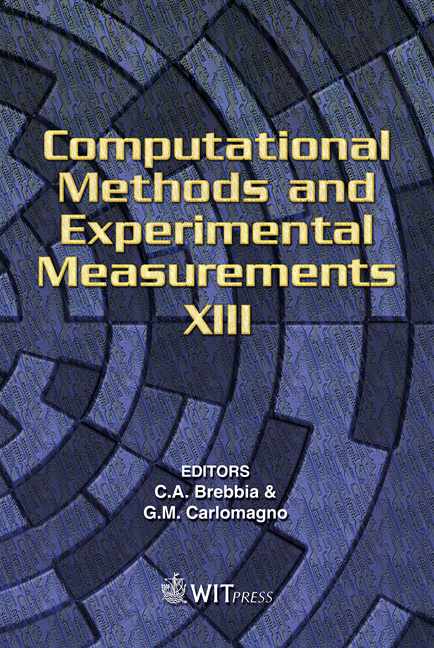Temperature Field At The Twin-roll Casting Of Aluminium Alloys: Computational Model And Measurements
Price
Free (open access)
Transaction
Volume
46
Pages
10
Published
2007
Size
1,478 kb
Paper DOI
10.2495/CMEM070041
Copyright
WIT Press
Author(s)
H. Gjerkeš, S. Hartman, R. Vertnik & B. Šarler
Abstract
Industrial twin-roll casting of aluminium alloys requires optimisation of connections between process parameters and product properties. To a large extent, the cast strip properties depend on the spatial and temporal characteristics of heat transfer from the cast strip, which needs estimation of the influence of process parameters on the temperature field and temperature gradients in a strip for various alloys, which are cast on an industrial machine. For this purpose, the recently developed meshless Local Radial Basis Function Collocation Method (LRBFCM) was used in the simulation of heat transfer from the strip. The solution of the nonlinear convection-diffusion equation is based on a mixture continuum formulation of the energy transport in solid-liquid phase change systems. Simulation results were compared with experimental values, which were obtained during the industrial production process. They were measured in situ by the specially designed apparatus with fast response thermocouples, which can measure the time-dependent temperature of the cast strip in several locations on the moving strip surface simultaneously. The time-dependent measurement was coupled with a digital camera recording to gather the spatial domain measurement of temperature. The differences between the numerical simulation and experimental results were smaller than 6 K. An explanation for the discrepancy is given. Keywords: twin-roll casting, aluminium alloys, measurements, surface temperature, meshless method, radial basis functions.
Keywords
twin-roll casting, aluminium alloys, measurements, surface temperature, meshless method, radial basis functions.





